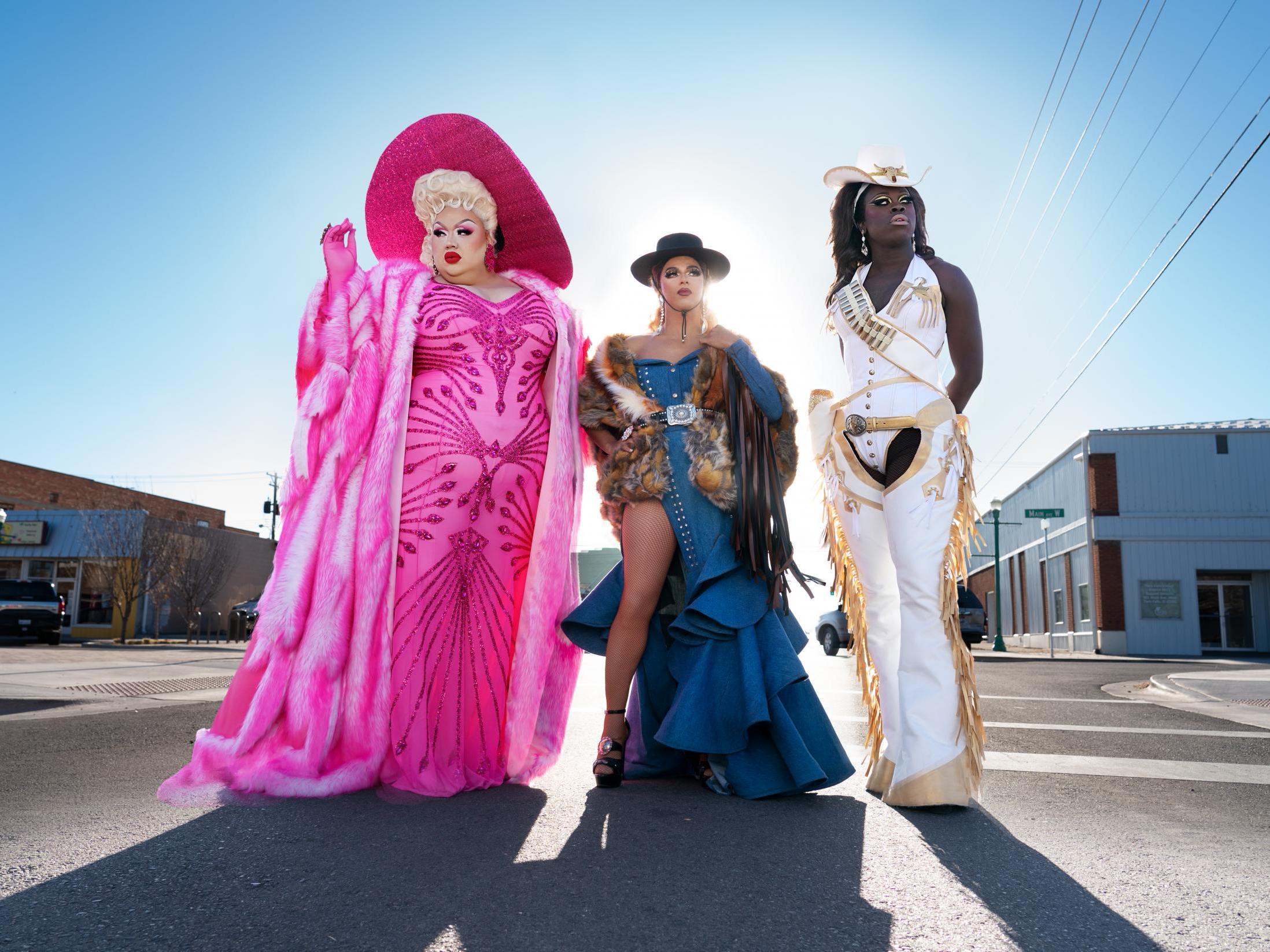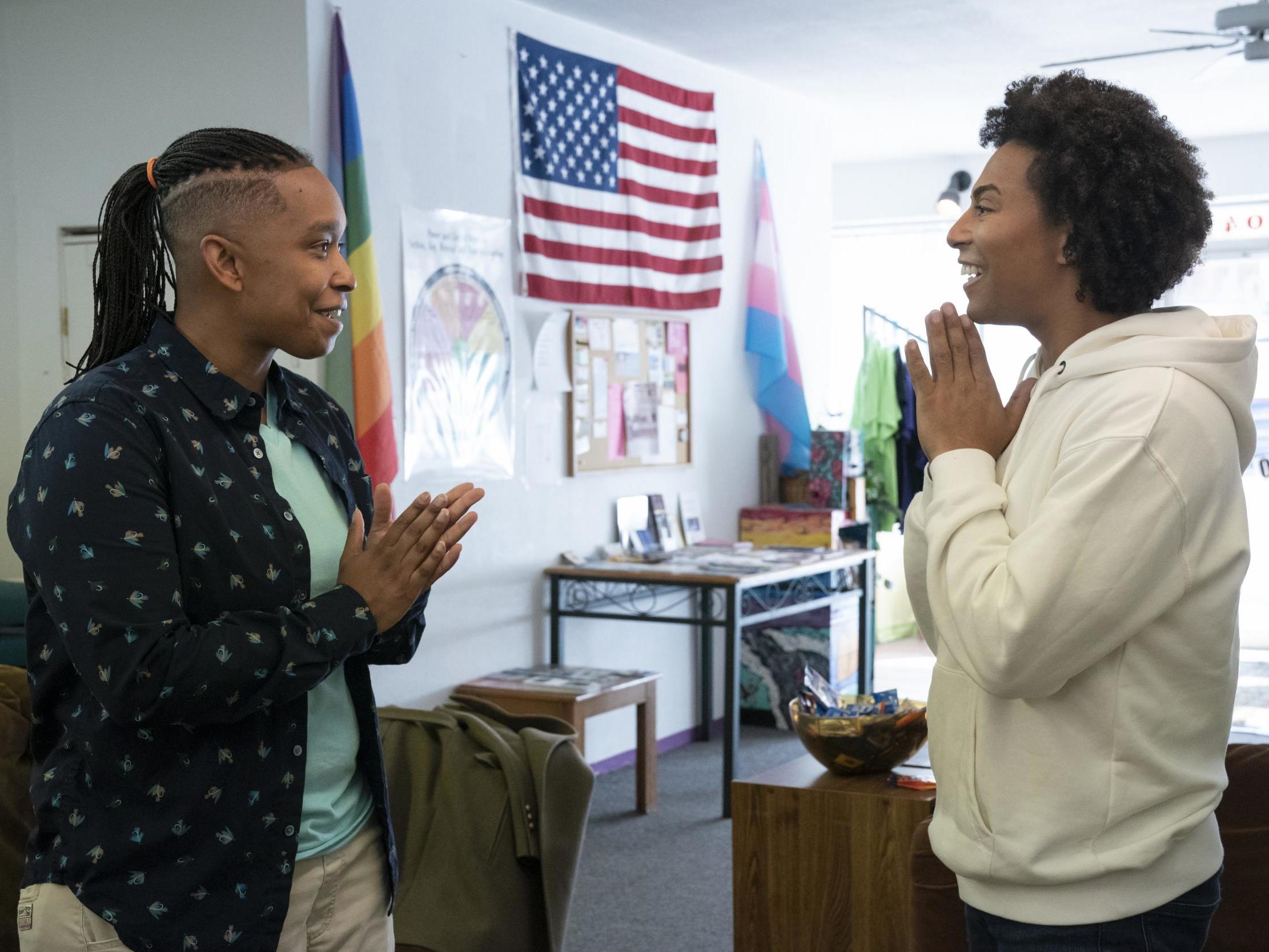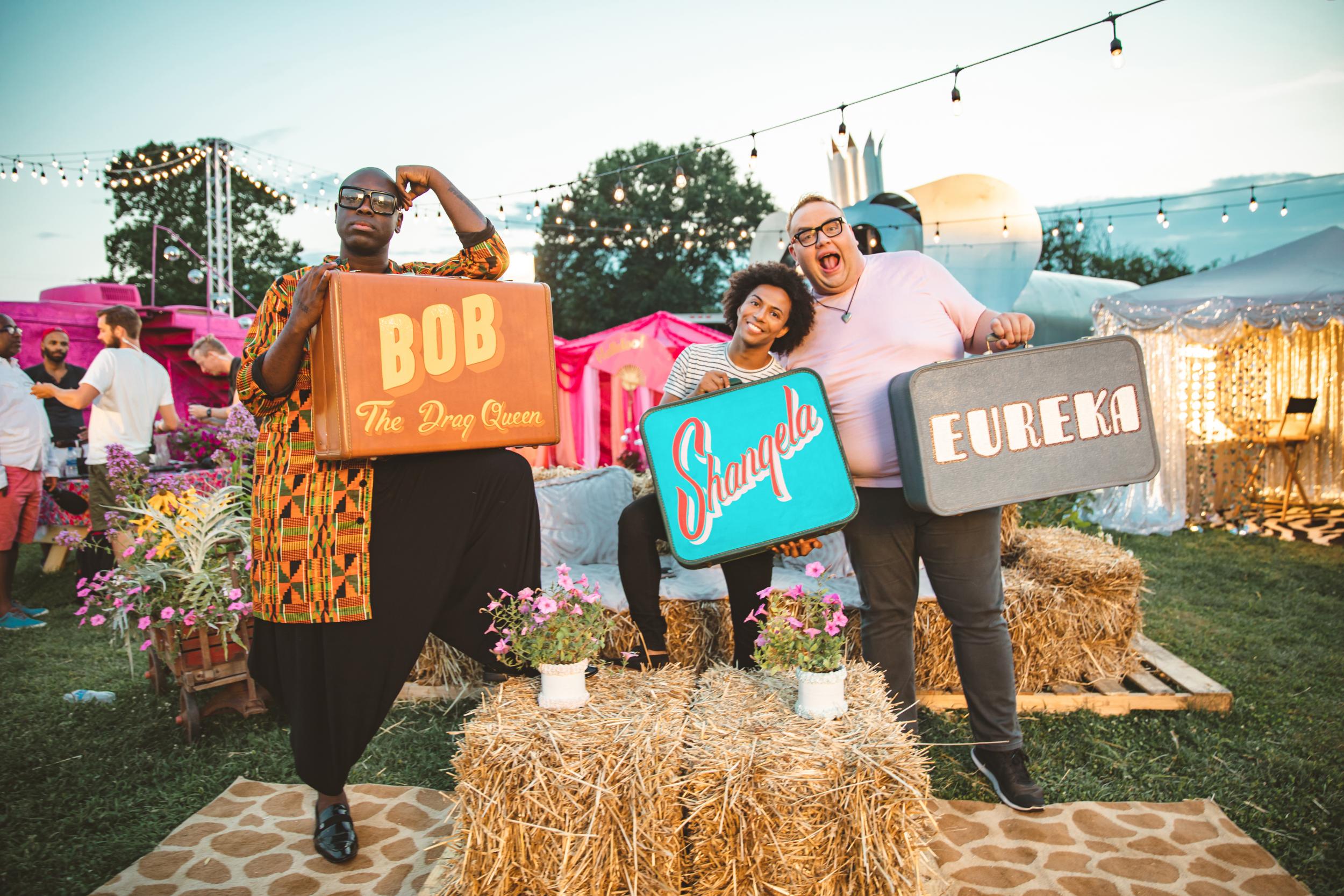‘Each drag child comes to the show with their own story’: We’re Here stars on Drag Race, fame and the importance of trans representation
‘RuPaul’s Drag Race’ stars Shangela, Bob the Drag Queen and Eureka O’Hara talk to Isobel Lewis about makeover series ‘We’re Here’ and what happens when drag goes mainstream


Your support helps us to tell the story
From reproductive rights to climate change to Big Tech, The Independent is on the ground when the story is developing. Whether it's investigating the financials of Elon Musk's pro-Trump PAC or producing our latest documentary, 'The A Word', which shines a light on the American women fighting for reproductive rights, we know how important it is to parse out the facts from the messaging.
At such a critical moment in US history, we need reporters on the ground. Your donation allows us to keep sending journalists to speak to both sides of the story.
The Independent is trusted by Americans across the entire political spectrum. And unlike many other quality news outlets, we choose not to lock Americans out of our reporting and analysis with paywalls. We believe quality journalism should be available to everyone, paid for by those who can afford it.
Your support makes all the difference.In our so-called hustle culture, the term “multihyphenates” is thrown around a lot. But the original multihyphenates – or, more accurately, multi-multi-multihyphenates – have always been drag queens. They’re dancers, comedians, musicians, designers and actors all rolled into one, and now, with the arrival of HBO’s We’re Here, they’re also fairy godmothers.
Presented by three of RuPaul’s Drag Race’s most charismatic exports – Shangela Laquifa Wadley, Bob The Drag Queen and Eureka O’Hara – the six-part makeover series sees the queens travel to small towns across America, adopting their residents as drag children and allowing them to express themselves through the medium. There’s more than a whiff of Queer Eye to the show, with drag as an art form allowing the makeover subjects to open up to their communities, often for the first time.
“Filming the show reminded me how important human compassion and building connections through listening really is,” Shangela tells me when I sit down with the three queens over Zoom. There’s a natural ease between the hosts, who also served as consulting producers on the show, both supporting and mercilessly ribbing each other throughout our conversation. “That’s something that all three of us have been able to do throughout our entire drag careers and it allowed us to build a really strong bond with our drag children through great communication and compassion for people.”
Through the transformative power of drag, the show’s subjects gain the confidence to express who they really are and the struggles they’ve been through, with each episode ending in a tear-jerking lip-sync showcase for their local communities. Erica is a Christian mother who wants to apologise to her teenage daughter for rejecting her when she came out as bisexual. Michael, Owen and Amelia are local drag artists who have struggled to build themselves a community. Nicole is an out lesbian who struggles with constantly being misgendered.

As people on the fringes of society, drag queens – and LGBT+ people in general – are no strangers to dealing with prejudice. For all the smiles and glitter We’re Here provides, it’s also a stark reminder of a country divided. The communities visited are predominantly conservative, often religious, with Confederate flags and unsavoury remarks peppered among the teenagers asking for selfies. The queens handle these scenes with understanding and humour; when seemingly nice people use outdated language, they are firmly but kindly corrected.
“I go into situations with that regard, because that’s how I want people to treat me when I don’t understand something,” Bob says. “I mean, just last night, I had a discussion with my partner and said something I didn’t understand and he was like, ‘Oh, I didn’t like that.’ Then we had a talk about it and I appreciated that someone offered me that same luxury that I’ve offered others. It’s never a concerted effort or a case of me putting on my understanding hat.”
While drag is used as an educational tool, it’s also refreshingly presented as something that is for everyone. Each drag child comes to the show with their own story, whether they’re a trans person, a repentant former homophobe, or an indigenous gay man ready to be covered in glitter. People of every identity and orientation are treated with compassion, with Shangela describing the makeovers as an “authentic reflection of what our queer community looks like”.
“I think that there has been this huge perception that what’s on TV is necessarily what the greater world of drag represents, when there’s lots of cis women and trans people who’ve been doing drag for a very long time,” Bob says. Eureka agrees: “Drag Race isn’t the only place where queer entertainment and culture can be found and I think that’s what makes We’re Here so special and so important, that we do get a chance to do that representation.”

As RuPaul’s Drag Race has taken drag into the mainstream, so too has it been met with criticism. The show has been condemned for failing to acknowledge the diversity of the drag experience, both by only showing traditional drag queens, as opposed to bio queens, drag kings or any variety of performers, and with its minimal representation of trans women.
For the queens, criticising the show that broke new ground for drag and gave them their careers is clearly not easy. But they are moved by a responsibility to support their trans sisters. “I mean, people call out Drag Race a lot because it is one of the greatest shows that has done the most representation for drag,” says Shangela, “but the more representation across the board in the media for people from the queer community, that’s a win right there. Drag Race has put forth so many people in so many different walks of life, but you know what, there’s even more that hasn’t been represented by Drag Race that should have an opportunity to be represented.”
When it first aired in 2009, there was no way of knowing that a spot on Drag Race, or any one of its never-ending international iterations and spin-offs, would completely change the lives of its performers. Shangela may have first appeared on the show’s second season “with basically a dream and no make-up”, but she, like many of the show’s biggest characters, has gone on to achieve super-stardom. She appeared alongside Lady Gaga and Bradley Cooper in A Star Is Born, while queens of all levels can tour the world, fill convention centres and release their own shows.
Sure, having people see you as the person you were on a heavily constructed reality series is a weird experience, but as Eureka puts it: “One does grow and change a lot in four years, but personally, I love the fact that people just know who I am. I come from a small town in east Tennessee and Drag Race gave me the opportunity to live a bigger life. Honestly, we all kind of want a legacy and it’s nice to be remembered for moments that we really cherish.”
In many ways, Drag Race’s success has been an experiment in what happens when a historically fringe art form stops existing on the outskirts of society and enters the mainstream.
“Back in my day,” Bob says, expertly switching to imitate an elderly person, “drag used to be quite regional, where you could go from Manhattan to Brooklyn and have a hard time finding similarities in the styles. But now there’s an international drag scene, and its influence is seeping throughout and spreading across the whole drag space, where everyone is doing this similar eyebrow, or this similar pulled-back hair or the similar sense of humour. I don’t think that’s necessarily a bad thing, but it’s being represented by what we’re seeing on television.”
For all the criticism the show may face, it usually comes from a place of love. Nobody criticises Drag Race more than Drag Race fans, and while the show may have created its own hyper-commercialised form of drag, it’s allowed new audiences to see just how diverse the medium is beyond one reality TV show.
“Because we’ve been on television, we have had this exposure which means that we can bring people into the clubs, often who might not have been there before,” says Shangela. “That doesn’t mean that our drag is necessarily any better or any any more groundbreaking; it’s not tiered. We’re all drag queens, we all put our tucking panties on one leg at a time, hopefully, and it’s important that we remember that and continue to raise each other up.”
All episodes of ‘We’re Here’ are available on Sky One and streaming service NOW TV
Join our commenting forum
Join thought-provoking conversations, follow other Independent readers and see their replies
Comments